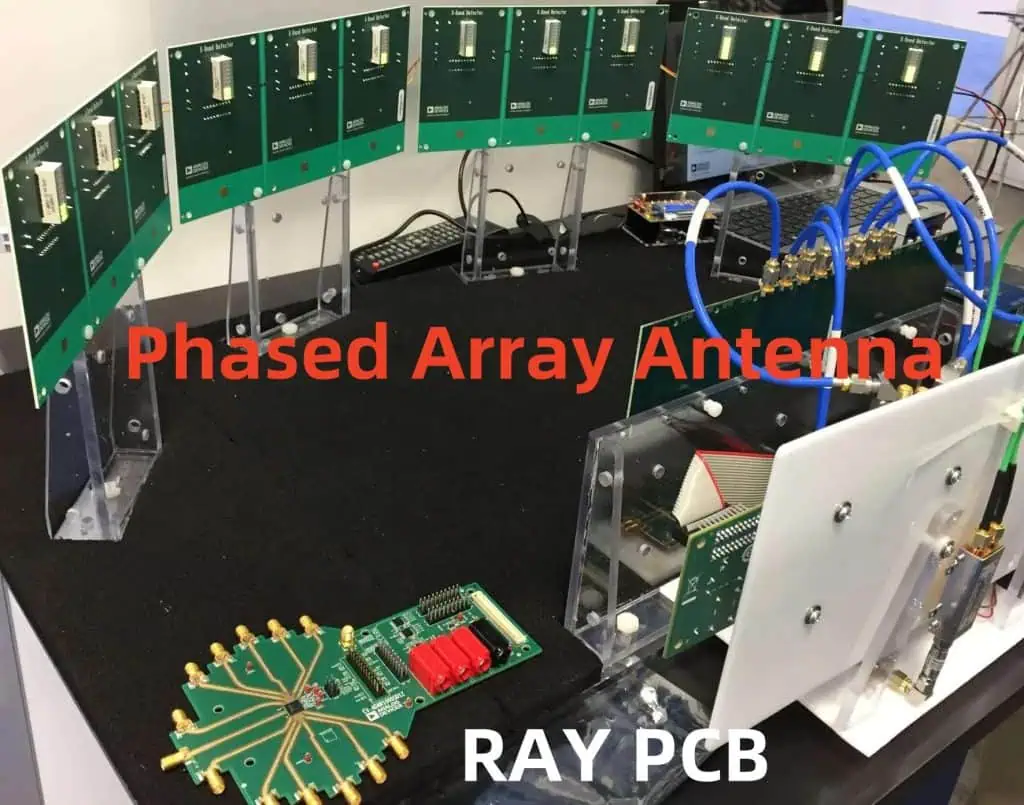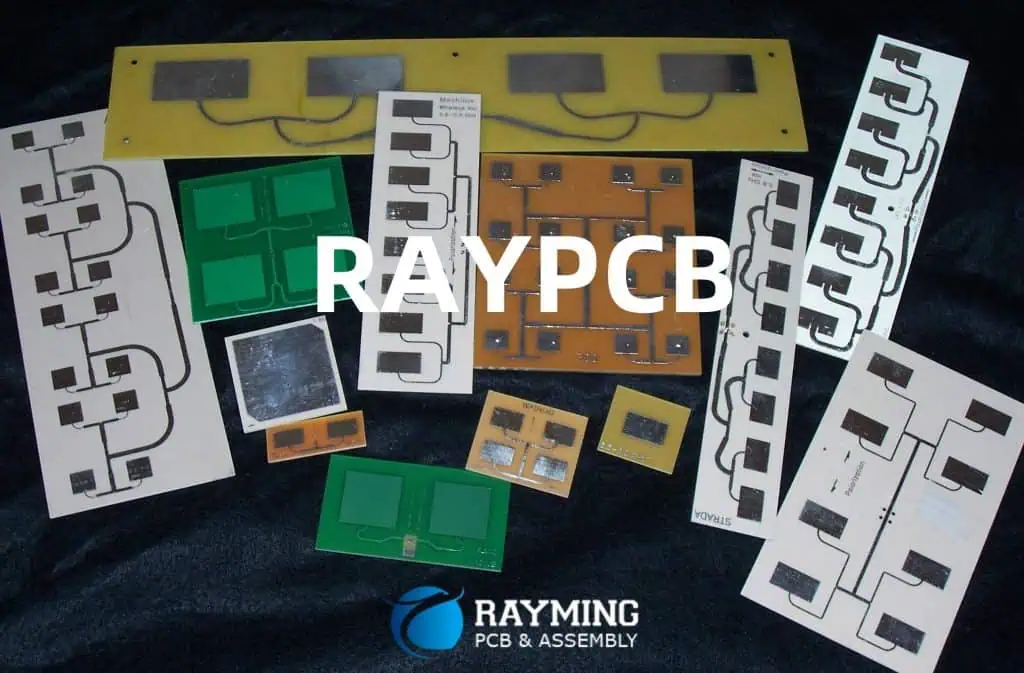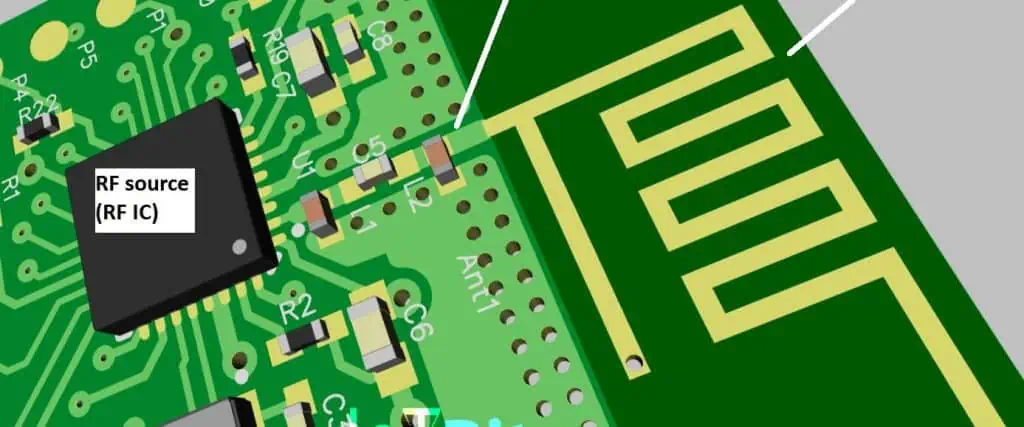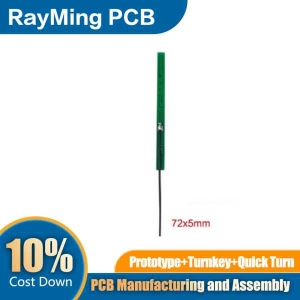The Internet of Things (IoT) has revolutionized the way we interact with the world around us, connecting billions of devices and enabling seamless communication between them. At the heart of this technological marvel lies a crucial component often overlooked: the antenna. Antennas play a pivotal role in ensuring efficient wireless communication for IoT devices, making their design a critical aspect of IoT product development.
This article delves into the intricate world of antenna design considerations for IoT devices, exploring the challenges, techniques, and best practices that engineers and designers must consider to create effective and efficient IoT solutions. From fundamental antenna parameters to advanced miniaturization techniques, we’ll cover a wide range of topics essential for successful IoT antenna design.

Fundamental Antenna Parameters

Before diving into the specifics of IoT antenna design, it’s crucial to understand the fundamental parameters that characterize antenna performance. These parameters form the foundation upon which all antenna designs are built and evaluated.
Gain and Directivity
Gain is a measure of an antenna’s ability to concentrate radiated power in a particular direction. It is closely related to directivity, which describes the antenna’s ability to focus energy in a specific direction compared to an isotropic radiator. In IoT applications, the choice between high-gain directional antennas and low-gain omnidirectional antennas depends on the specific use case and deployment scenario.
Radiation Pattern
The radiation pattern represents the spatial distribution of radiated energy from an antenna. It is typically represented in polar or rectangular plots and provides crucial information about the antenna’s coverage area and directionality. For IoT devices, understanding the radiation pattern is essential for ensuring proper signal coverage and minimizing interference.
Polarization
Antenna polarization refers to the orientation of the electric field of the radiated electromagnetic wave. Common polarizations include linear (vertical or horizontal) and circular. Matching the polarization of transmitting and receiving antennas is crucial for maximizing signal strength and minimizing losses in IoT communication links.
Bandwidth
Bandwidth defines the range of frequencies over which an antenna can operate effectively. In IoT applications, where devices may need to communicate across multiple frequency bands or standards, designing antennas with adequate bandwidth is essential for ensuring compatibility and performance.
Efficiency
Antenna efficiency is the ratio of radiated power to input power. It accounts for various losses within the antenna structure and is a critical parameter in IoT devices, where power consumption is often a primary concern. High-efficiency antennas help maximize battery life and improve overall system performance.
Input Impedance
Input impedance represents the load that the antenna presents to the transmitter or receiver circuit. Proper impedance matching between the antenna and the RF front-end is crucial for maximizing power transfer and minimizing reflections, which can degrade system performance.
Understanding these fundamental parameters is essential for making informed decisions during the antenna design process for IoT devices. The following table summarizes these parameters and their significance in IoT antenna design:
| Parameter | Description | Significance in IoT |
| Gain and Directivity | Measure of antenna’s ability to concentrate radiated power | Affects signal range and coverage area |
| Radiation Pattern | Spatial distribution of radiated energy | Determines coverage area and potential interference |
| Polarization | Orientation of the electric field | Impacts signal strength and reception quality |
| Bandwidth | Range of operational frequencies | Ensures compatibility with multiple standards |
| Efficiency | Ratio of radiated power to input power | Affects power consumption and battery life |
| Input Impedance | Load presented to the transmitter/receiver | Influences pow |
Types of Antennas for IoT Devices

IoT devices encompass a wide range of applications, from small wearables to large industrial sensors. Consequently, the choice of antenna type depends on factors such as size constraints, frequency of operation, and environmental conditions. Here are some common antenna types used in IoT devices:
Chip Antennas
Chip antennas are small, surface-mount components that integrate the radiating element onto a ceramic substrate. They are popular in compact IoT devices due to their small form factor and ease of integration. Chip antennas offer good performance for short-range applications but may have limitations in terms of efficiency and bandwidth.
PCB Antennas
Printed Circuit Board (PCB) antennas are etched directly onto the device’s circuit board, making them a cost-effective and space-efficient solution for IoT devices. Common types of PCB antennas include:
- Inverted-F Antenna (IFA)
- Planar Inverted-F Antenna (PIFA)
- Meandered Monopole
- Loop Antenna
PCB antennas offer flexibility in design and can be easily customized to fit specific device requirements. However, their performance can be sensitive to nearby components and ground plane variations.
Wire Antennas
Wire antennas, such as monopoles and dipoles, are simple and cost-effective solutions for IoT devices that can accommodate external antennas. They offer good performance and flexibility but may not be suitable for compact or aesthetically sensitive applications.
Helical Antennas
Helical antennas consist of a conducting wire wound in the form of a helix. They are known for their compact size and ability to provide circular polarization, making them suitable for applications where antenna orientation may vary, such as in wearable devices or asset tracking.
Patch Antennas
Patch antennas, also known as microstrip antennas, consist of a flat rectangular sheet of metal mounted over a larger sheet of metal called a ground plane. They offer a low profile and are suitable for directional applications. Patch antennas can be easily integrated into the surface of IoT devices but may have bandwidth limitations.
Fractal Antennas
Fractal antennas utilize self-similar patterns to create compact, multi-band designs. They are particularly useful in IoT applications requiring operation across multiple frequency bands while maintaining a small form factor.
The following table summarizes the characteristics and typical applications of these antenna types in IoT devices:
| Antenna Type | Characteristics | Typical IoT Applications |
| Chip Antennas | Small size, easy integration, limited efficiency | Wearables, compact sensors |
| PCB Antennas | Cost-effective, customizable, space-efficient | General-purpose IoT devices |
| Wire Antennas | Simple, cost-effective, good performance | External antennas for larger IoT devices |
| Helical Antennas | Compact, circular polarization | Wearables, asset tracking |
| Patch Antennas | Low profile, directional | Smart home devices, industrial sensors |
| Fractal Antennas | Multi-band operation, compact size | Multi-standard IoT devices |
Antenna Design Challenges in IoT

Designing antennas for IoT devices presents unique challenges that stem from the diverse requirements and constraints of IoT applications. Understanding these challenges is crucial for developing effective antenna solutions. Here are some key challenges faced by antenna designers in the IoT space:
Miniaturization
One of the most significant challenges in IoT antenna design is the need for miniaturization. As IoT devices become smaller and more compact, the available space for antennas shrinks. This constraint often conflicts with the fundamental principle that antenna performance is generally proportional to its electrical size. Designers must find innovative ways to maintain acceptable performance while reducing antenna dimensions.
Multi-band Operation
Many IoT devices need to operate across multiple frequency bands to support various wireless standards (e.g., Wi-Fi, Bluetooth, cellular, LoRa). Designing antennas that can efficiently cover multiple bands while maintaining a small form factor is a significant challenge. This often requires the use of complex geometries or multiple antenna elements.
Energy Efficiency
IoT devices, especially those powered by batteries or energy harvesting systems, have strict power consumption requirements. Antenna design plays a crucial role in overall system efficiency. Designers must optimize antenna efficiency to minimize power loss and extend battery life, often while working within size and cost constraints.
Environmental Factors
IoT devices are deployed in a wide range of environments, from indoor spaces to harsh outdoor conditions. Antenna designs must account for factors such as temperature variations, humidity, and physical stress. Additionally, the presence of nearby objects or the human body can significantly affect antenna performance, requiring careful consideration of the device’s intended use case.
Integration and Packaging
Integrating antennas into IoT devices while maintaining performance and minimizing interference from other components is a complex task. Designers must consider the entire device layout, including the placement of batteries, sensors, and other electronic components. The challenge is to find optimal antenna placement and design that coexists harmoniously with other device elements.
Cost Constraints
Many IoT applications require low-cost solutions for mass deployment. Antenna designs must not only meet performance requirements but also be economically viable for large-scale production. This often necessitates the use of low-cost materials and manufacturing processes without compromising on essential performance metrics.
Regulatory Compliance
IoT devices must comply with various regional and international regulations governing wireless communications. Antenna designs need to ensure that the device meets specific absorption rate (SAR) limits, electromagnetic compatibility (EMC) standards, and frequency allocation rules. Achieving compliance while maintaining performance and cost-effectiveness adds another layer of complexity to the design process.
Performance in Complex Environments
IoT devices often operate in challenging RF environments characterized by multipath propagation, interference, and signal blockage. Antenna designs must be robust enough to maintain reliable communication under these conditions, which may require techniques such as diversity or beamforming in more advanced applications.
Bandwidth and Efficiency Trade-offs
Achieving wide bandwidth and high efficiency simultaneously is particularly challenging for electrically small antennas common in IoT devices. Designers often need to make trade-offs between these parameters based on the specific requirements of the application.
Simulation and Testing Complexity
The small size and complex environments of IoT devices make accurate simulation and testing of antenna performance challenging. Designers need to use advanced electromagnetic simulation tools and develop specialized testing methodologies to ensure that antenna designs perform as expected in real-world conditions.
The following table summarizes these challenges and their implications for IoT antenna design:
| Challenge | Implication for IoT Antenna Design |
| Miniaturization | Requires innovative design techniques to maintain performance in limited space |
| Multi-band Operation | Necessitates complex antenna geometries or multiple elements |
| Energy Efficiency | Demands optimization of antenna efficiency to extend battery life |
| Environmental Factors | Requires robust designs that perform well in various conditions |
| Integration and Packaging | Calls for careful consideration of antenna placement and interaction with other components |
| Cost Constraints | Necessitates use of low-cost materials and manufacturing processes |
| Regulatory Compliance | Adds complexity to ensure designs meet various standards and regulations |
| Performance in Complex Environments | Requires robust designs or advanced techniques like diversity |
| Bandwidth and Efficiency Trade-offs | Demands careful balancing of performance parameters |
| Simulation and Testing Complexity | Necessitates advanced tools and specialized methodologie |
Antenna Miniaturization Techniques
As IoT devices continue to shrink in size, antenna miniaturization becomes increasingly important. However, reducing antenna size often comes at the cost of performance degradation. To address this challenge, antenna designers employ various techniques to achieve compact designs without significantly compromising performance. Here are some key antenna miniaturization techniques used in IoT applications:
Meander Line Antennas
Meander line antennas use a folded conductor path to increase the electrical length of the antenna while maintaining a small physical footprint. This technique is particularly useful for designing compact monopole and dipole antennas. The meandering pattern can be optimized to achieve the desired resonant frequency and bandwidth within a limited space.
Fractal Antennas
Fractal antennas utilize self-similar geometric patterns that repeat at different scales. This approach allows for the creation of antennas with long electrical lengths in compact physical dimensions. Fractal designs can also exhibit multi-band behavior, making them suitable for IoT devices that need to operate across multiple frequency bands.
Lumped Element Loading
This technique involves adding lumped elements such as capacitors or inductors to the antenna structure. These elements can be used to manipulate the antenna’s electrical characteristics, allowing for size reduction while maintaining the desired resonant frequency. Lumped element loading can be particularly effective for impedance matching and bandwidth enhancement in small antennas.
Material Loading
Using high-permittivity or high-permeability materials in antenna design can help reduce the physical size of the antenna. These materials effectively shrink the wavelength of the electromagnetic waves, allowing for smaller antenna dimensions. However, care must be taken to manage losses associated with some high-permittivity materials.
Ground Plane Manipulation
Techniques such as defected ground structures (DGS) or electromagnetic bandgap (EBG) structures can be used to modify the behavior of the ground plane. These approaches can help in size reduction, bandwidth enhancement, and mitigation of surface wave propagation, which is particularly useful in planar antenna designs.
Slot Loading
Introducing slots into the antenna structure can help in modifying its electrical characteristics. Slot loading can be used to create additional resonances, enhance bandwidth, or reduce the overall size of the antenna. This technique is often employed in patch antennas and planar inverted-F antennas (PIFA).
3D Antenna Structures
Utilizing the third dimension in antenna design can help achieve compact sizes while maintaining performance. Techniques such as folded structures, 3D printing of complex geometries, or vertically integrated antennas can significantly reduce the antenna’s footprint on the device.
Meta-material Inspired Designs
Meta-materials are engineered structures that exhibit electromagnetic properties not found in nature. Meta-material inspired antenna designs can achieve size reduction and performance enhancement through careful manipulation of the antenna’s electromagnetic environment.
Dielectric Resonator Antennas (DRA)
DRAs use high-permittivity dielectric materials as the primary radiating element. These antennas can be significantly smaller than their metallic counterparts operating at the same frequency, making them suitable for compact IoT devices.
Chip Antennas
While not a miniaturization technique per se, chip antennas represent a highly integrated solution for very small IoT devices. These antennas incorporate the radiating element and matching network into a single, compact package that can be easily surface-mounted on a PCB.
The following table summarizes these miniaturization techniques and their key characteristics:
| Technique | Key Characteristics | Advantages | Challenges |
| Meander Line Antennas | Folded conductor path | Efficient use of space, simple design | Potential for increased losses |
| Fractal Antennas | Self-similar geometric patterns | Multi-band operation, compact size | Complex geometry, manufacturing challenges |
| Lumped Element Loading | Addition of capacitors or inductors | Flexible tuning, impedance matching | Additional components, potential for losses |
| Material Loading | Use of high-permittivity materials | Significant size reduction | Material losses, cost |
| Ground Plane Manipulation | DGS or EBG structures | Enhanced bandwidth, surface wave suppression | Complex analysis and design |
| Slot Loading | Introduction of slots in antenna structure | Multi-band operation, size reduction | Careful design required to maintain efficiency |
| 3D Antenna Structures | Utilization of vertical space | Efficient use of device volume | Manufacturing and integration challenges |
| Meta-material Inspired Designs | Engineered electromagnetic structures | Novel properties, enhanced performance | Complex design and analysis |
| Dielectric Resonator Antennas | High-permittivity dielectric radiators | Significant size reduction, high efficiency | Material selection, excitation mechanism |
| Chip Antennas | Highly integrated package | Very small size, easy in |




